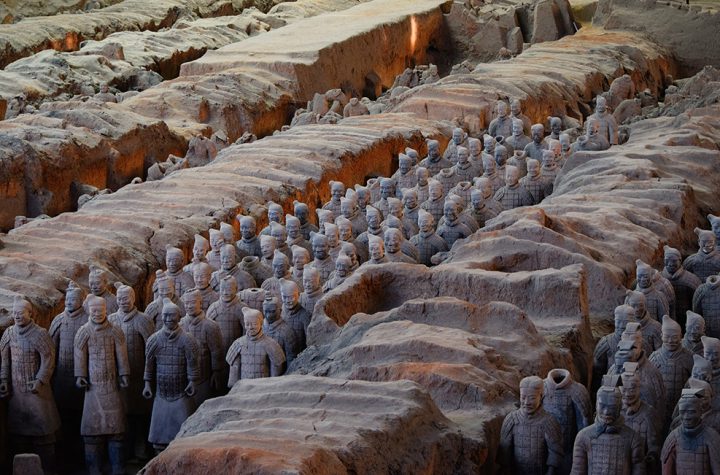
The House voted Thursday to limit President Donald Trump’s ability to unilaterally order military operations against Iran without further authorization from Congress and said the U.S. must cease military action within 30 days. The resolution stipulated the Constitutional limits that curtail the president’s ability to deploy U.S. military forces abroad. It does not, however, deal with paramilitary forceslike those of the Central Intelligence Agency. In the wake of the killing of Iranian Quds Force commander Maj. Gen. Qassem Soleimani last week, it’s a crucial question: What is the president allowed to doand who does he have to tell?
When news broke about the drone strike against Soleimani, lawmakers like New York Senator Chuck Schumer and Virginia Senator Mark Warner complained about not being notified, Speaker of the House Nancy Pelosi criticized the president for not coming to Congress beforehand (and pushed the House to vote on the War Powers resolution this week), and there was general confusion over whether the strike had illegally usurped Congress’s power to declare war.
The president tweeted his own view of the rules (which met with predictable pushback).
These Media Posts will serve as notification to the United States Congress that should Iran strike any U.S. person or target, the United States will quickly & fully strike back, & perhaps in a disproportionate manner. Such legal notice is not required, but is given nevertheless!
— Donald J. Trump (@realDonaldTrump) January 5, 2020
The primary mechanism granting authority to carry out operations by the U.S. military in Iraq is the Authorization for Use of Military Force (AUMF) which grants the president the power “to take action to deter and prevent acts of international terrorism against the United States.” Passed in response to the September 11 attacks, the original AUMF was tied to the Taliban and al Qaeda and associated forces; it did not authorize a broad and unlimited “war on terror.” In 2002 an additional AUMF was passed authorizing the president “to defend the national security of the United States against the continuing threat posed by Iraq.” This AUMF was the basis for operations against ISIS in Syria and in Iraq. The president is required to notify Congress of the deployment within 48 hours. And as always, Congress holds the power of the purse.
But the U.S. military is not alone in its ability to carry out strikes of the kind that killed Soleimani. The CIA is also capable of complex armed and lethal force operations, and in fact has a presence in the region and flies the same type of drone used in the strike. While the military and CIA share similar capabilities, the approval process involved differs significantly. A CIA operation is in the sole purview of the president and requires only that the commander in chief submit a presidential finding within 48 hours of ordering an operation.
Let’s take a hypothetical. What if the MQ-9 Reaper drone that carried out the Soleimani strike was not a military drone but part of the CIA? The operation would not be covered by the AUMF, says national security expert Brad Moss, but governed by Executive Order 12333 and the National Security Act. Authority to direct the CIA to carry out operations comes under Title 50 and is granted by approving “covert action.” The National Security Act defines covert action as “an activity or activities of the United States Government to influence political, economic, or military conditions abroad, where it is intended that the role of the United States Government will not be apparent or acknowledged publicly.”
EO 12333 comes with its own protocols. First, it is the responsibility of the National Security Council (NSC) to “consider and submit to the president a policy recommendation, including all dissents, on each proposed covert action,” as well as review the action once it has been launched. While the NSC prepares policy and reviews action, it is the Director of National Intelligence (DNI) who advises the president with respect to all ongoing and proposed covert action programs.
Finally, the congressional reporting duty lies with the CIA Director and heads of any other agencies involved in a covert action, to inform congressional intelligence committees. There is no congressional approval required for covert action but the president must report the presidential finding to the Gang of Eightthe majority and minority leaders of each chamber as well as the chairperson and ranking minority members of the Intelligence Committees.
Can covert action be used for targeted assassinations? Presidents Gerald Ford in 1976, Jimmy Carter in 1978 and Ronald Reagan in 1981 signed Executive Orders banning such strikes. But in reality, the CIA has used drones to kill enemy combatants on the battlefield, including Americans like Anwar al-Awlaki, assassinated in Yemen on the order of President Barack Obama. Previous presidents’ executive orders are still in place, Moss points out, but “the office of the president issues EOs and the office of the president can choose to ignore the EO.”
From the Bay of Pigs invasion in 1961 to the intelligence that targeted ISIS leader Bakr al-Baghdadi last October, the CIA has been involved in covert actions with significant international impact. And there is little in the way of a check on presidential power to use the CIA operationallyeven when it comes to lethal operations. Should President Trump want to escalate hostilities with Iran while avoiding congressional oversight, the CIA provides him with a method to do so.





More Stories
A teenager from Co Offaly has been “inundated” with orders for his handmade reindeer decorations after his mother put up a post in a popular Facebook group.
Run Windows apps such as Microsoft Office in Linux (Ubuntu) and GNOME as if they were a part of the native OS, including Nautilus integration. – Fmstrat/winapps
With Australia’s relationship with China at a very dangerous stage, the timing of what is expected to be a ‘more nuanced’ approach from a Biden administration could not be more welcome.